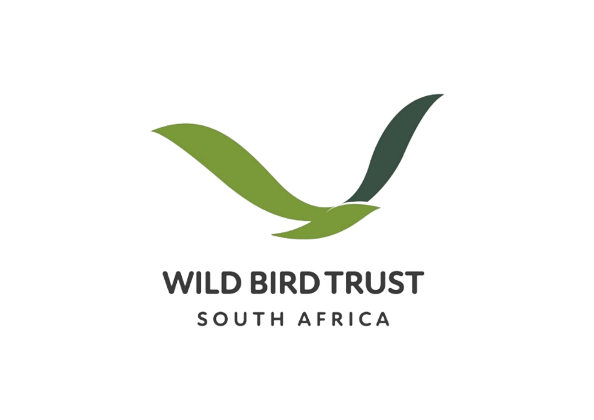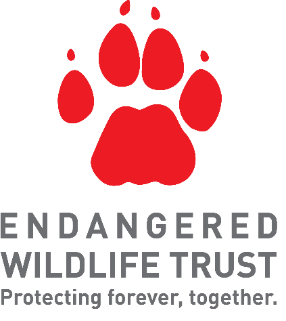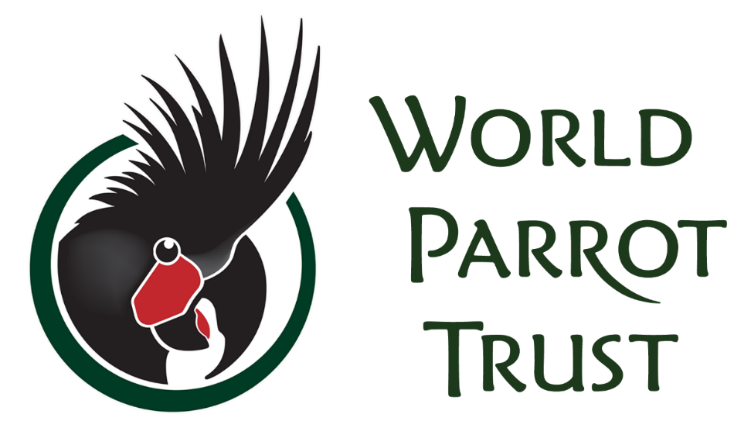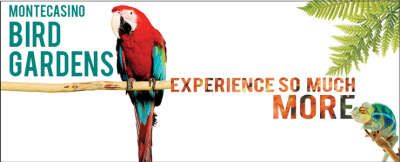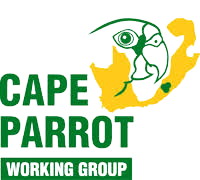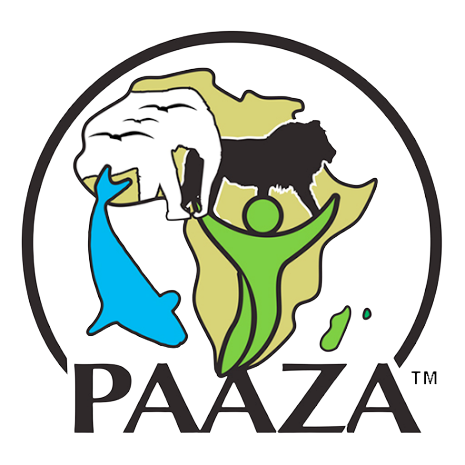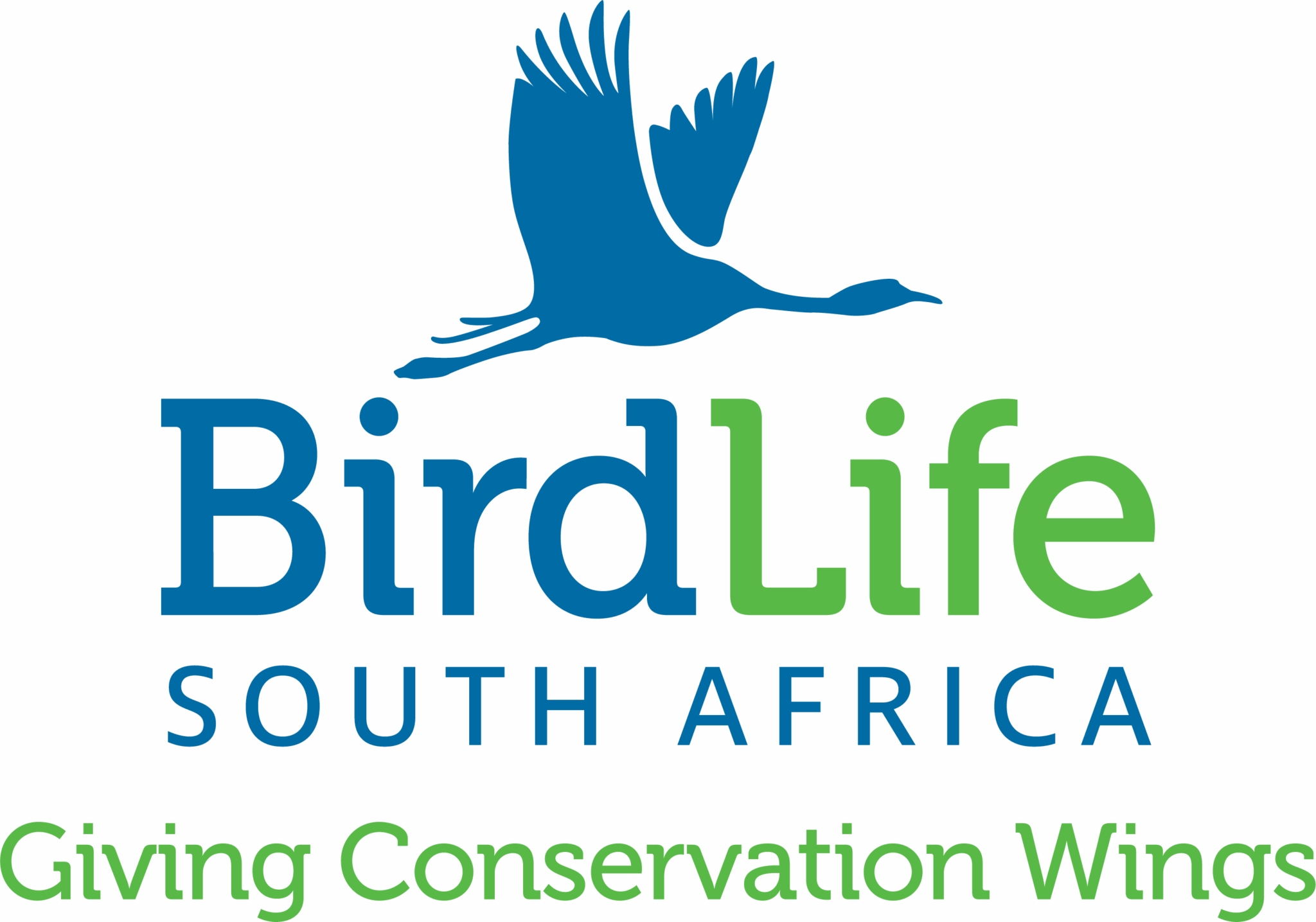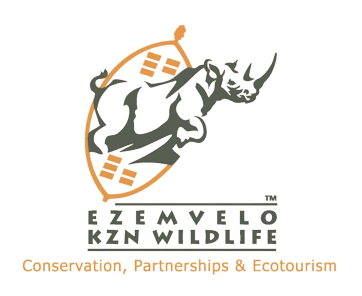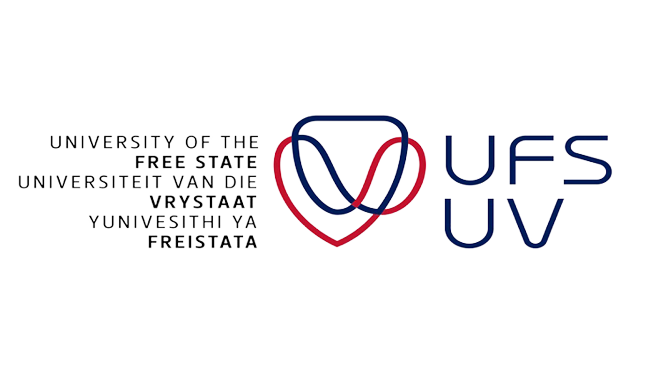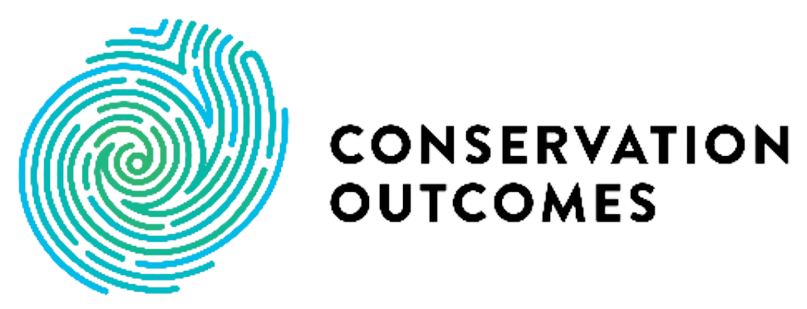Cape Parrot and Mistbelt Forest Action Plan
About
Cape Parrot
Workshop
Action Plan
Committee

About
Following a multi-stakeholder Conservation Action Planning workshop held in the Amathole mountain village of Hogsback in the Eastern Cape, South Africa in September 2019, the Cape Parrot and Mistbelt Forest Action Plan was published in March 2020. This collaboratively developed, multidisciplinary action plan is underpinned by a unified vision for the conservation of the endangered and endemic Cape Parrot (Poicephalus robustus), and its forest habitat. Specifically, the action plan identifies species and habitat conservation goals, and the activities needed to achieve them over the next 10 years. In recognition of the need for a body of stakeholders with the sole purpose of working collectively to see the action plan set into motion, the Cape Parrot Action Plan Coordinating Committee was established in July 2020. This dedicated group of individuals, representing a range of institutions and a broad spectrum of knowledge and expertise, are working together to see that priority conservation activities are implemented so as to achieve the overarching vision of the action plan, which is:
“A thriving population of Cape Parrots acting as a flagship for the protection and recovery of indigenous forests in South Africa, for the shared benefit of people and nature”.
Cape Parrot
Although long considered a distinct species by several authorities, Cape Parrots were only recognised as a separate species by the International Union for the Conservation of Nature (IUCN ) in 2017. Prior to this time, Cape parrots were considered to be the nominate subspecies of Poicephalus robustus alongside Grey-headed Parrot Poicephalus robustus suahelicus of south-eastern Africa and Brown-necked Parrot Poicephalus robustus fuscicollis of West Africa. Studies of molecular systematics in 2015, prompted a re-evaluation by BirdLife International against a set of criteria concerning morphology, vocalisations, ecology and behaviour. Thus, while still often confused with the more widely distributed Grey-headed Parrot, the Cape Parrot is now definitively the only endemic parrot species in South Africa. The classification of Cape parrots as a distinct species resulted in an evaluation of their conservation status (on the IUCN Red List of Threatened Species) where they were categorised as globally Vulnerable, with the population thought to be stable. Nationally however, they are categorised on the Eskom Red Data book as Endangered. This is because of the small population, estimated to be < 2 500 adults, with a projected decline of at least 20% over the next two generations.
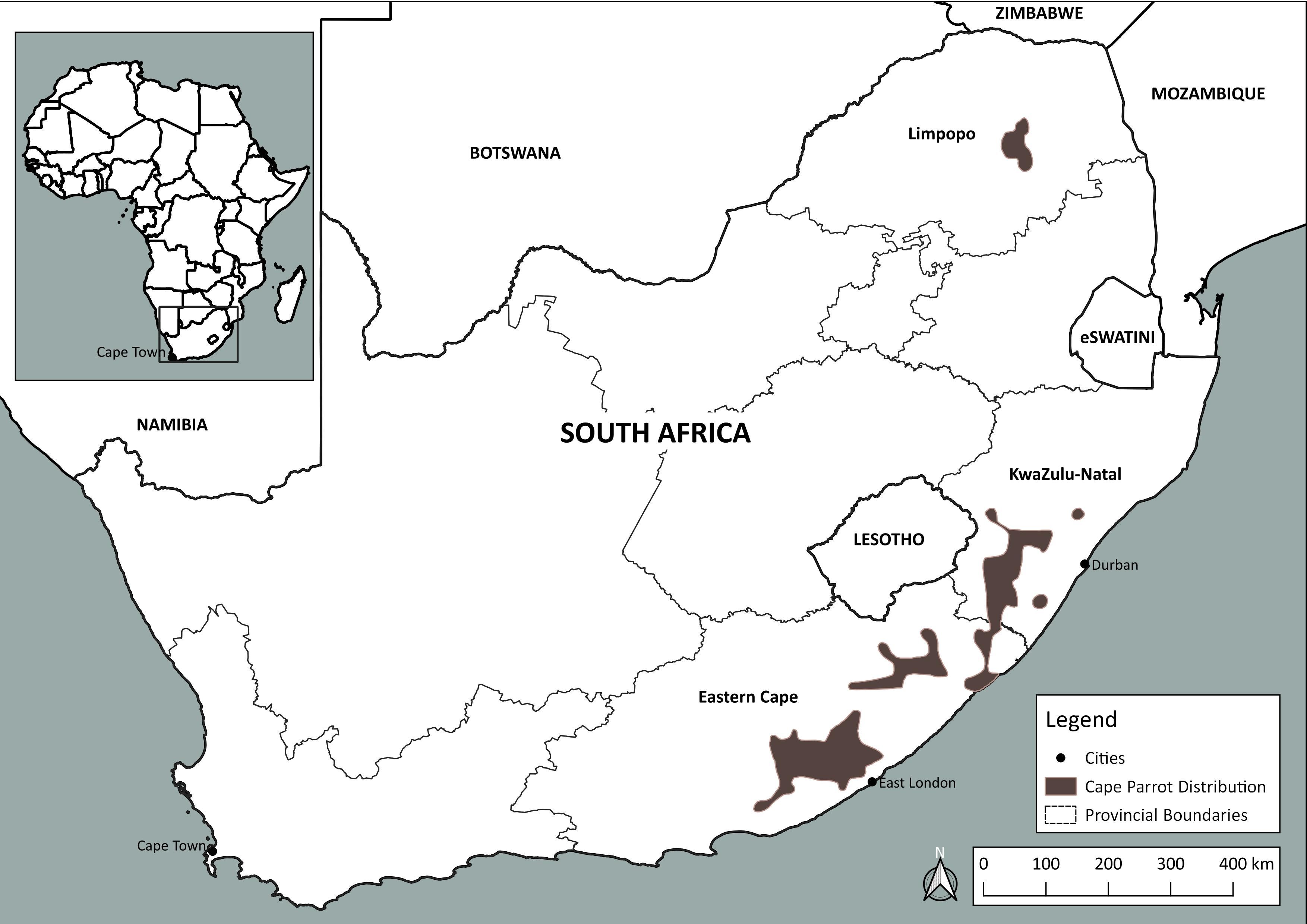
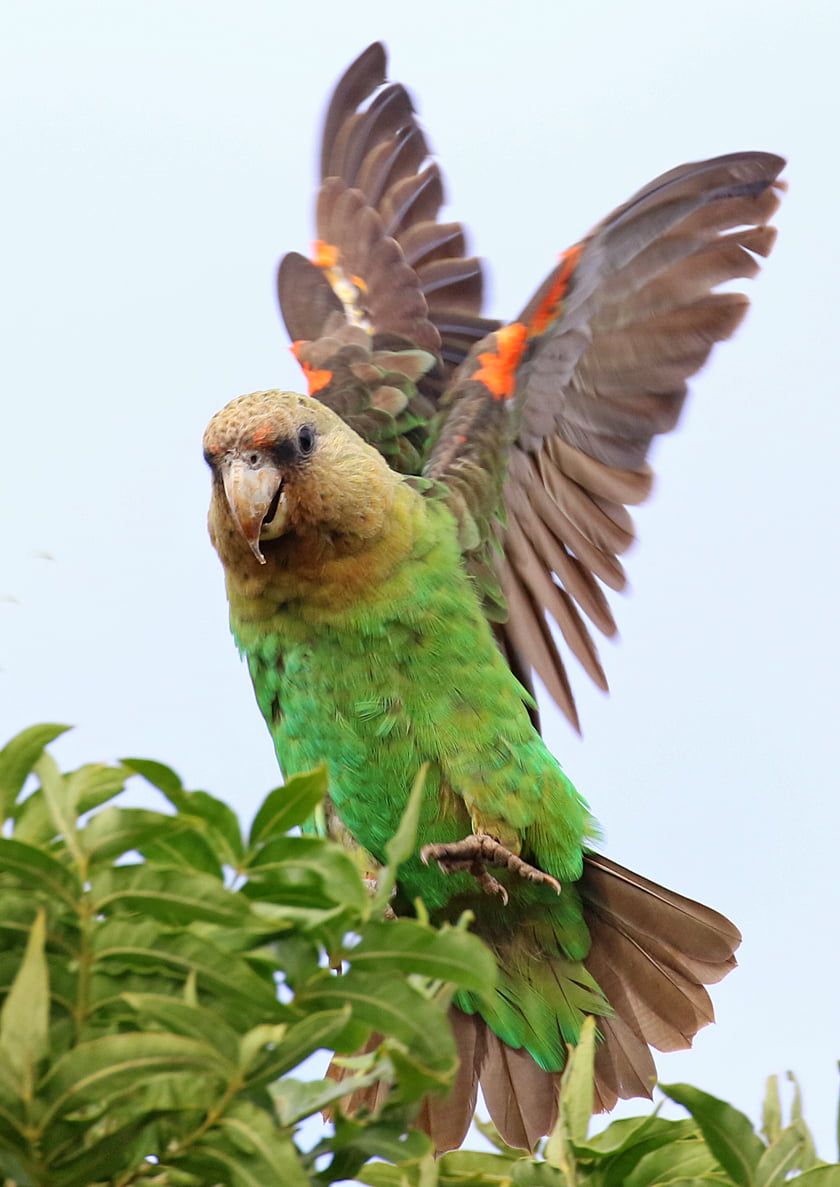
The distribution of Cape parrots is closely tied to that of afromontane forests stretching from the Amathole mountains in the Eastern Cape, through KwaZulu-Natal along the escarpment, and into the Limpopo Province in the north of South Africa (FIGURE: Distribution Map). Moreover, within this band of forest, the primary habitat for Cape Parrots is the mosaic of Southern Mistbelt forest patches, which occur at altitudes between 700 to 1 400 meters above sea level, and are (or at least historically were) dominated by yellowwood trees (e.g. Podocarpusp and Afrocarpus falcatus). This habitat preference is underpinned by the fact that the Cape Parrot relies strongly on both the fruit and naturally occurring cavities of large yellowwood trees for feeding and nesting, respectively. The protection of both the quantity and quality of these forest habitats is thus vital for the conservation of the species.
Consequently, a key threat to the species is habitat loss and degradation, and the associated lack of nesting sites and food. Additionally, the species is threatened by disease, specifically Psittacine Beak and Feather Disease (PBFD), which currently affects the population. Emerging threats to Cape parrot habitat include climate change which may cause habitat shifting and alteration, and the newly discovered polyphagous shot hole borer beetle (Euwallacea fornicates) which is causing the deaths of trees at a growing number of locations across South Africa.
The Action Plan Workshop
Given future projected declines in the Cape Parrot population and the identification of novel threats facing the species, an updated plan building on previous plans and reviews was required to guide future and ongoing conservation efforts. Consequently, the Cape Parrot Action Plan workshop was convened in September 2019, in partnership with the IUCN Species Survival Commission Conservation Planning Specialist Group, with the aim to review the current status and threats to Cape Parrots, and to develop a Conservation Action Plan for the species, setting reasonable and measurable targets for species recovery with the inclusion of all relevant stakeholders. Specifically, the Action Plan Workshop involved 48 stakeholders representing 23 organisations, departments and institutions. The benefits of developing a Cape Parrot Action Plan through a multi-stakeholder workshop are (a) that it facilitates the documentation of coordinated conservation actions required to protect the Cape Parrot and its habitat; and (b) the process engages with a diversity of stakeholders, providing clarity on their roles and responsibilities, and in so doing, fosters an environment of inclusion and shared responsibility for the conservation of the species. Importantly it reinvigorates communities, organisations, institutions, governmental departments, businesses, and individuals to be involved in Cape Parrot conservation.
An open standards approach was used to guide the workshop process. On day one, participants reviewed the species’ status; defined conservation aims; identified threats; and proposed priority conservation strategies surrounding: i) species and research; ii) habitat and landscape; iii) community engagement; and iv) law enforcement and policy development. On day two, working groups prioritised and outlined activities needed to achieve each strategy, including the delineation of timeframes; responsible organisations; and methods to monitor success.
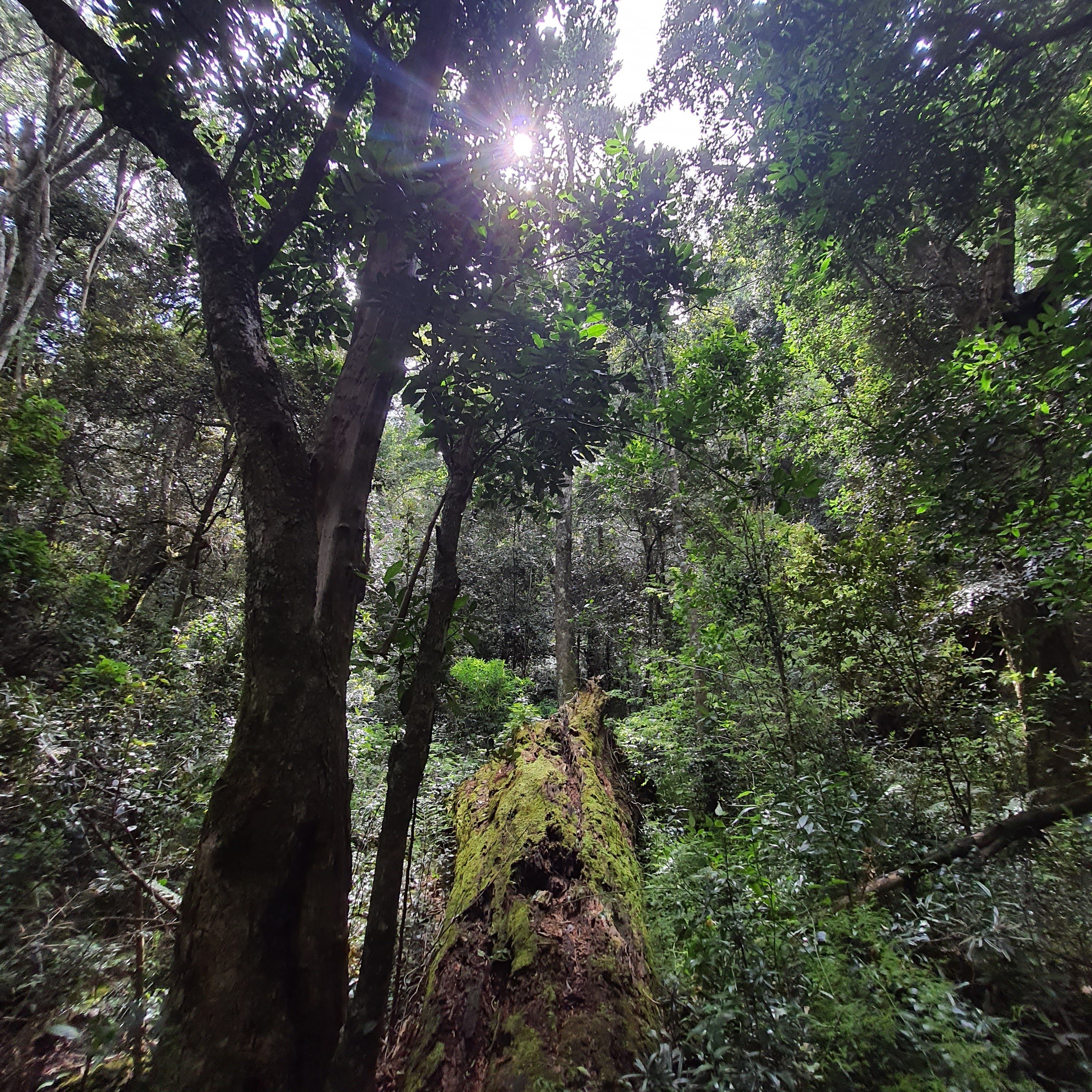

The committee has an annual meeting to discuss and review progress
The Action Plan
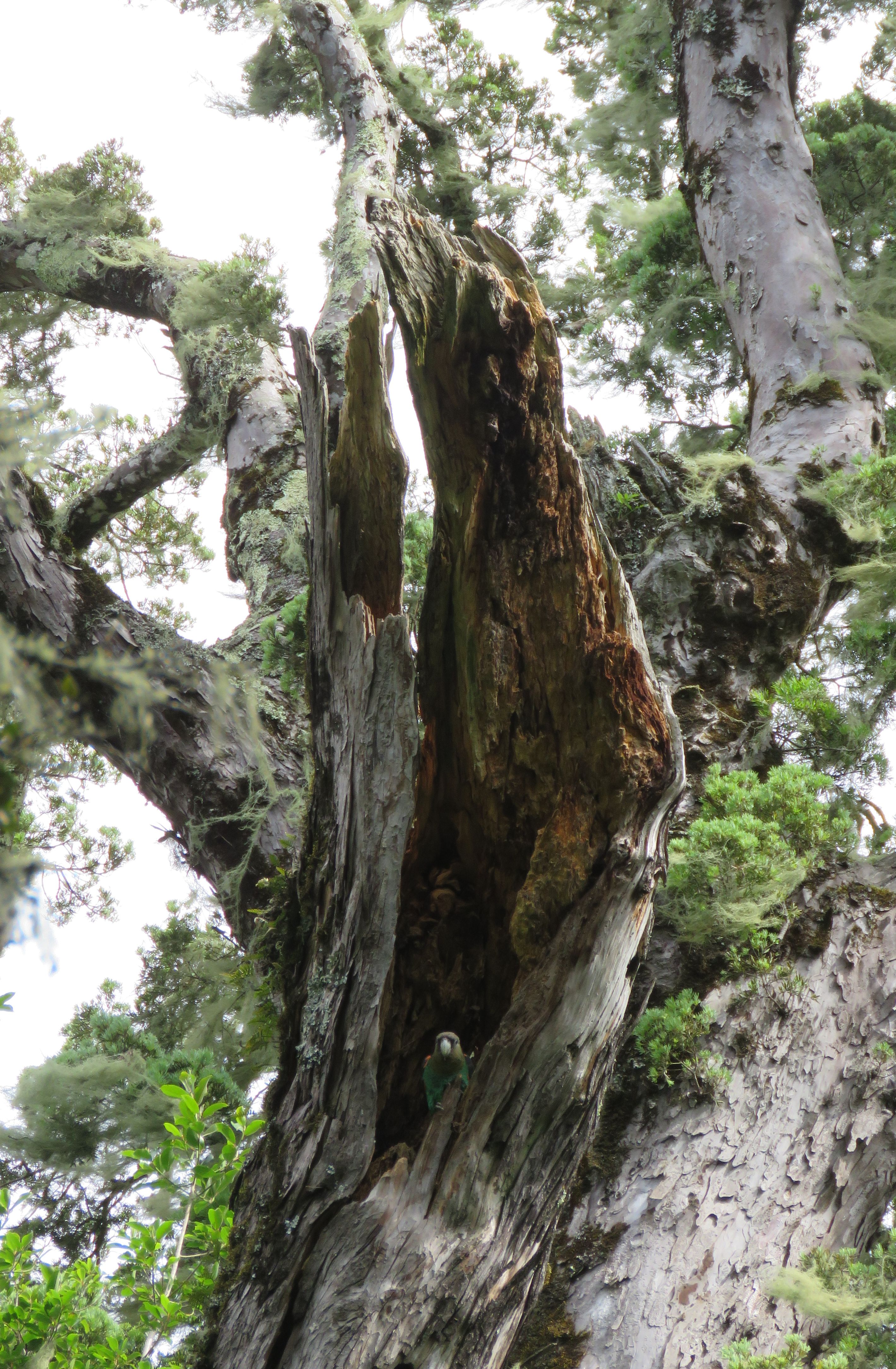
These collaboratively developed strategies were subsequently compiled to create the Cape Parrot and Mistbelt Forest Conservation Action Plan. Consequently, the primary outcome of the workshop was a 10-year roadmap for Cape parrot conservation in the form of a multi-disciplinary conservation action plan. Importantly, the action plan defines the agreed-upon vision, scope, goals and targets to conserve the Cape parrot. In recognition of the central role of habitat protection, the plan focuses jointly on the conservation of the species and their associated forests, including the ambitious target of doubling the area of Southern Mistbelt forest under formal protection in the next ten years. Consequently, two overall goals of the action plan relate to the species, while two are concerned with habitat conservation, as follows:
1. Current levels of genetic diversity are maintained within and between the three sub-populations.
2. Sustained growth in effective population size, towards a total wild population of 2 500 individuals, with no reduction in Cape Parrot distribution across the known range.
HABITAT GOALS (encompassing the Forest/Grassland mosaic):
1. Formal protection of at least 10% of currently-used Cape Parrot habitat, with a score of at least 50% on the Management Effectiveness Tracking Tool for protected areas (METT-SA).
2. Habitat degradation, particularly in mature forest, is halted by 2025; and total Cape Parrot niche habitat area is maintained at >100,000 ha within the defined scope and timescale of the action plan.
To achieve these goals, 90 conservation actions are listed in the action plan, nested within four priority conservation strategies, namely: 1) Species and research; 2) Habitat and landscape; 3) Community engagement; and 4) Law enforcement and policy development.
